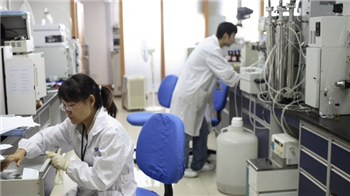
China’s dominance as a manufacturing destination has diminished as labour costs in the country rise and as overall foreign direct investment flows plateau, but this is being offset by successes in capturing higher-value inward investment projects, such as those related to research and development. China is emerging as an R&D hub, in line with a government push to promote innovation and a race by Chinese companies to catch up with western competitors.
随着中国国内劳动力成本上升,以及流入中国的外商直接投资(FDI)进入平稳期,中国作为制造业外国投资主要目的地国的地位开始下降,但中国在吸引更高价值的外国投资项目方面——例如与研发有关的项目——颇为成功。中国正成为一个研发中心,这与中国政府推动创新的努力以及中国企业追赶西方竞争对手的行动相符。
Research from fDi Markets, an FT data service, reveals that China has caught up with the US in attracting foreign investment in R&D. Between January 2010 and December 2014, China attracted 88 greenfield R&D projects from foreign companies, against 91 in the US, and these projects involved capital investment of an estimated $5.5bn — more than twice the amount for the US. This puts China first in the world for the amount of greenfield foreign investment in R&D projects since 2010 and second in number of projects.
英国《金融时报》旗下数据服务机构fDi Markets的研究显示,在吸引外国研发投资方面,中国已赶上美国的脚步。2010年1月至2014年12月,中国吸引了来自外国公司的88个绿地研发项目,美国吸引了91个;中国这些项目估计涉及55亿美元资本投资,是美国的两倍多。也就是说,中国自2010年以来在研发领域吸引的绿地外国投资规模位居全球之首,项目数量位居全球第二。
Last year, fDi Markets tracked 11 R&D projects into China, for $1.3bn, compared with 17 projects totalling $327m into the US. The previous year, China received 24 R&D projects at nearly $1.4bn, in a year when global greenfield expenditure on R&D projects continued a decline seen since 2011.
去年,fDi Markets追踪了中国吸引的11个研发项目,价值13亿美元,美国为17个项目,总价值3.27亿美元。2013年,中国吸引了近14亿美元、24个研发项目投资,当年,全球绿地研发投资支出延续自2011年以来的下滑势头。
The pharmaceuticals sector is leading R&D investment in China, accounting for $1.6bn last year. Business machines and equipment ($817m) and consumer electronics ($540m) were the second and third most active sectors, suggesting a healthy spread of research-intensive activity across key industries. US companies are the most active R&D investors in China, with 32 companies spending $1.6bn on 36 projects in 2014, according to fDi Markets.
制药行业是中国首要的研发投资领域,去年吸引了16亿美元投资。商业机器和设备(8.17亿美元)以及消费电子(5.4亿美元)分列第二和第三,这表明,研究密集型活动在各个关键行业之间呈现健康分布。在中国进行研发投资的外国公司中,美国公司最为活跃——根据fDi Markets的数据,去年,有32家美国公司在中国36个项目上支出16亿美元。
This comes as domestic Chinese companies are ramping up their own R&D expenditure and helping lead a shift in global R&D spending patterns and innovative activity. According to a study from consultancy Strategy&, while North American, European and Japanese companies still dominate total worldwide R&D spending, their respective shares are either stagnating or declining. The number of companies with headquarters in China represented on Strategy&’s Global Innovation 1000 list has multiplied from just eight in 2005 to 114 in 2014, and Chinese companies increased their R&D spending by 46 per cent last year compared with single-digit growth rates in North America and Europe.
目前中国国内企业正加大研发支出,并帮助引领全球研发支出模式和创新活动的新趋势。根据咨询机构Strategy&的一项研究,北美、欧洲和日本公司仍在全球研发总支出中占主导地位,但它们各自所占的份额要么不再增长,要么出现了下滑。登上Strategy&全球创新1000强(Global Innovation 1000)榜单的总部位于中国的公司数量从2005年的8家增至2014年的114家;中国公司去年的研发支出增长46%,而北美和欧洲的这个增速仅为个位数。
Publicly funded R&D is also on the rise in China, as the government seeks to move the economy rapidly up the value chain. It is a climb that appears to be all but complete.
在中国,政府资助的研发项目也在增多,因为中国政府希望迅速提升本国经济活动在价值链上的位置。目前看来,中国似乎已快要完成这个“攀升”阶段。












